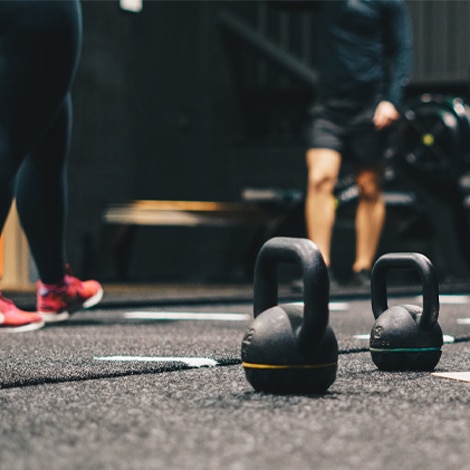Source: “How Swansea City uses Technology to Holistically Manage Todays Athlete”
Written by Mark J. Burns | Sport Techie (June 2017)
Swansea City FC sits in the lower half of Premier League football clubs in terms of annual player spend, and as a result, it has to get scrappier and strategic with how it maximizes its talent on the pitch. That’s where Performance Director Richard Buchanan and his support staff of physiotherapists, data scientists, psychologists, sports scientists and other medical professionals enter the picture.
Since joining the club starting with the 2009-10 campaign — and especially over the past few seasons — there’s been an inherent conversation around how to smartly leverage performance data, player-tracking devices, wearables and additional technology to manage their athletes’ health and wellness.
“For me, it was about creating this one unified team rather than having different professional disciplines in separate silos,” Buchanan said. “That’s the crux of what happens day-to-day, it’s about making sure everyone’s on the same page, information is getting shared and there is good communication. To me that is indicative into a successful, high performance environment. It seems to be a growing trend.”
The 360-degree view of the athlete started with a centralized athlete management database from Australian-based Fusion Sport called Smartabase, according to Buchanan, where players’ medical and psychological information is housed in addition to a number of other key elements like results from hydration testing, external consultations, heart rate metrics and performance information, among other data points.
“The database acts as a safety net for communication failure and also helps direct communication among the support performance staff,” Buchanan said.
Every morning, he and his colleagues gather for a performance meeting to assess each player’s individualized dashboard through Smartabase to monitor and see if anyone is outside the normal health parameters they’ve set for the week. If a player is yellow, for example, Buchanan said his team of medical professionals will “investigate the alert, drill down into it and see if there’s an action plan that needs to be created.” As he explained, a player highlighted with red probably means he’s currently unavailable.
He explained that with the round-table discussion and the constant communication among professional disciplines within the football club, everyone has an equal voice, making it acceptable for the data scientist to question one of the lead doctors and vice versa. It’s that open dialogue, information sharing and buy-in from the dozen or so professionals, according to Buchanan, which has led to increased communication from all parties.
For example, ChyronHego’s TRACAB image-based tracking system is deployed throughout each Premier League venue and follows players’ movements, change of direction and speed, among other variables, in real-time. Information is then processed through Swansea’s Smartabase system. Similarly, Swansea is the only club in the Premier League to wear its own GPS tracking devices during matches, partnering with wearable provider Catapult.
“We’ve been doing that for two seasons,” explained Buchanan. “The reason we do that is because it gives us a robustness of the data sets. We can compare our training data and match data with the same system.”
Added Buchanan about having both Catapult and ChyronHego data sources: “Its’s almost like double security, if you like, on what we’re doing. There’s a slight variance, not huge, but slight. We’re essentially covering all of our bases. It’s something that is accepted by our players now that they wear them in games. They’re embedded in these pockets which are specially inserted into the match shirts.”
He further elaborated that there’s been some resistance from other Premier League teams about wearing a GPS device during matches, saying “maybe the players aren’t too keen or there’s a question about obtaining the data.”
For the past few years, Swansea has also integrated Polar heart rate monitors and trackers into the holistic fitness picture as well, screening players during the preseason period for six weeks in order to gauge their sleep quality. Anyone displaying sleep issues are then provided recommendations for how to improve their sleep, with Buchanan saying that the testing has helped “one or two players” in the last couple of years. He added that there isn’t a constant monitoring of sleep during the regular season.
“It’s a fine line between intrusive and helping them during the pre-season,” he added.
Finally, as part of the club’s readiness to train program, one of the team’s sports scientists will run players through a hydration test two days before a match and the day prior in order to ensure everyone is ready come match time.
“It gives us a window of opportunity to make sure, that come game day, we’ve dealt with any guys who might be dehydrated, minimize the risk of injury and optimize the chances for a good performance,” he said.
Alex Thomas, Swansea City’s lead data scientist, is able to leverage the data platform Smartabase and build it in such a way that compiles all of the information in a centralize storage warehouse. Though Buchanan didn’t discuss specifics, Thomas’ uniquely-built algorithms can then churn out recommended procedures for how the athletes are managed on a daily and weekly basis.
Thomas — who Buchanan said “could probably go work for NASA” — was one of the first data scientists employed by a Premier League team. One of their main priorities is to keep players within what they call the “Goldilocks zone,” an optimal zone around physical and mental well-being, both objectively and subjectively.
While all of the data being collected is important in its own right, Buchanan said that the team places a lot of weight on the GPS tracking of players and compares their weekly training and workloads to the previous 21 days. Why? As he explained, it’s to measure and analyze if there’s any outliers when it comes to players’ physical outputs. Conversely, subjective feedback from the players is ironically given the same weight as objective data. Players also fill out a five question daily wellness questionnaire on their iPads around how well they’ve slept, are they fatigued and if they’re stressed. Both sides are cross-referenced, said Buchanan, to maximize performance but also prevent injuries.
“Football is one of those sports which is rich in data collection,” he said. “It’s only been in the past few years where the analytics of that data has started to kick in. It was just about being at the forefront and being ahead of the curve, to have someone like (data scientist) Alex Thomas helps us stay ahead of the curve. It’s the way it’s going. It’s about making sense of what we’re collecting day-to-day.”
Find more information on Smartabase here or contact us now to book in a demo with our team today.







